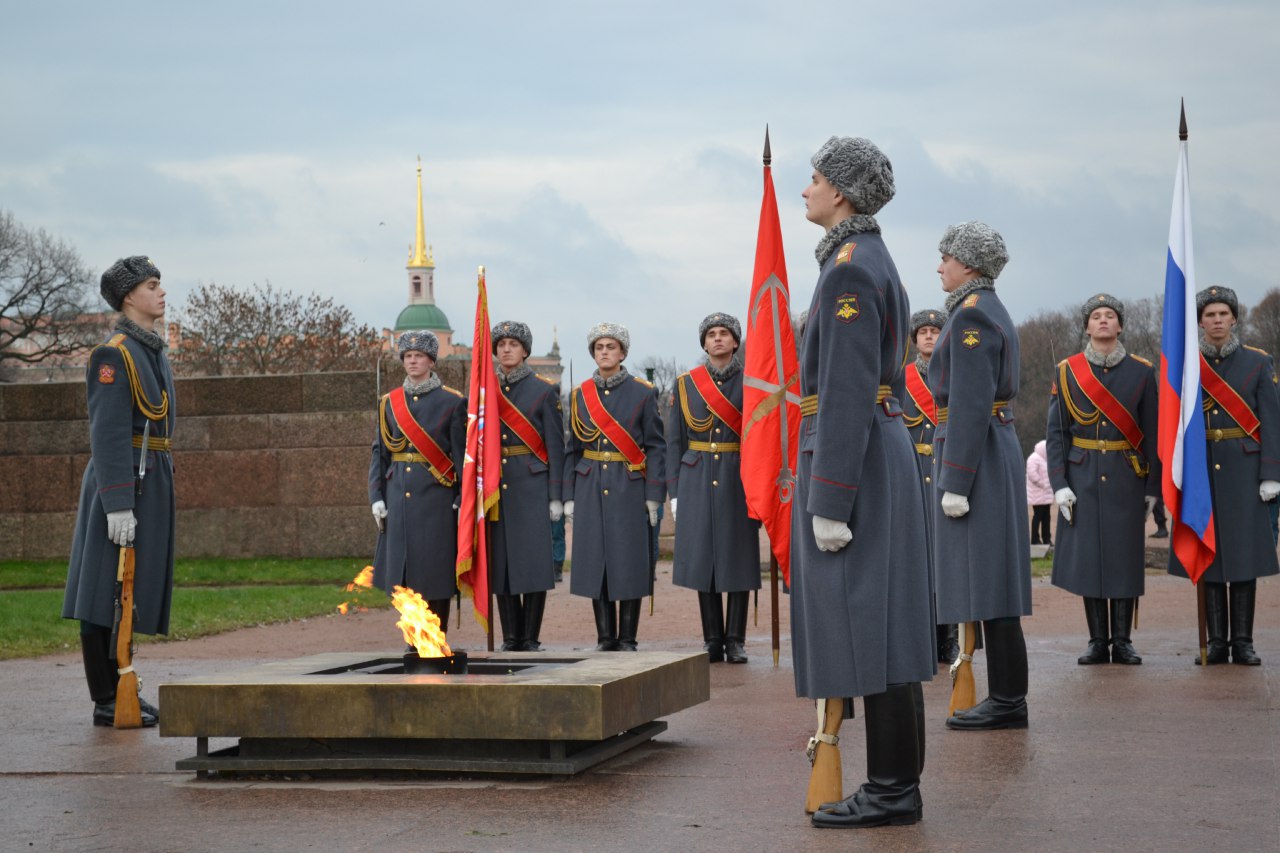Usually the military parades were passing on that meadow. Private guided tour in St Petersburg will help you to learn the history of the Field of Mars.
What You Will See on the Field of Mars Tour - St Petersburg, Russia
In 1798-1801 the monuments to the military leaders P.A. Rumyantsev and A.V. Suvorov were placed there. In 1818 Rumyantsevsky Obelisk moved to the Vasilyevsky Island, but the name “Field of Mars” (like the Field of Mars in ancient Rome and Paris) was still approved for that area.
In 1918-1944 it was called the Square of Revolution Victims.
The planning and gardening of the Field of Mars were carried out according to the project of the academician I.A. Fomin. The memorial complex in the center of the Field’s territory was created by the architect L.V. Rudnev.
The memorial complex was open on November 7, 1919. The material of the memorial was the following: pink and gray granite, shod metal.
The first deceased buried on the Field of Mars were the victims of the February Revolution.
Among the deceased buried on the Field of Mars were Petrograd workers who had fallen during the Yaroslavl revolt on July 6 — 21, 1918, the participants of the Petrograd defense against the armies of the general N.N. Yudenich and also the following people:
- Moisey Solomonovich Uritsky — the first chief of Petrograd Cheka (All-Russian Extraordinary Commission).
- V. Volodarsky (Moisey Markovich Goldstein) — the Soviet propagandist, the commissioner of the press, promotion and propaganda.
- Some Latvian shooters, including their commissioner S.M. Nakhimson.
- Seven victims of the attack on Kuusinen's Club on August 31, 1920, including two members of the Central Committee of the Finnish Communist Party Yukka Rakhya and Vyayno Yokinen.
- The Soviet military figure Rudolf Sivers (1892-1919) who was killed in the battle.
- The young actor and propagandist Kotya (Ivan Aleksandrovich) Mgebrov-Chekan (1913-1922) who died under the strange circumstances and was declared as "the hero of revolution".
- Mikhaylov Lev Mikhaylovich (1872-1928) — the bolshevik, the chairman of the first legal Petersburg Committee of RSDRP (b).
- Ivan Ivanovich Gaza — the Soviet politician. The member of RSDRP (b) since April, 1917.
In 1920-1923 the park was arranged at the Square of Revolution Victims. There were used the lamps from the former Nikolayevsky Bridge that was then renamed into Lieutenant Schmidt Bridge (nowadays it is the Blagoveshchensky Bridge).
Up to 1933 the deceased Soviet workers and politicians continued to be buried there.
In 1957 the Eternal Flame was lit at the entrance of the memorial complex.
In 1965 the torch of the Eternal flame in Veliky Novgorod was lit from the fire on the Field of Mars; and on May 8, 1967 the Eternal flame on the Unknown Soldier’s Tomb in Moscow was lit in the same way.
At the beginning of the 2000 the metal decorative protections around the lawn of the memorial were removed.
The passage along the Field of Mars is actually the street in the Central district of St Petersburg.







